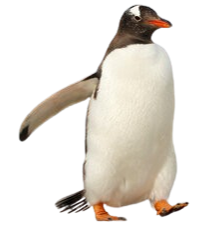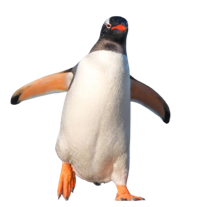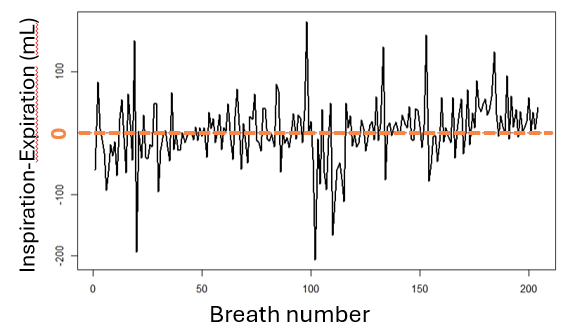Influence of body mass on respiratory parameters
As penguins grow, their respiratory capacity increases with body mass, until a developmental plateau is reached when they stop gaining weight and the respiratory parameters reach a relatively constant range.
Still, some values didn’t match allometric predictions. Why? Likely because of differences in measurement methods that alter stress levels and breathing mechanics.
Other studies have shown that:
- Using a mask increases minute ventilation by up to 48%, mainly due to a 25% increase in respiratory frequency.
- Lung volumes tend to be higher when animals are unrestrained.
- Lying on the stomach can restrict respiration because the bird’s own body weight limits the movement of the keel and ribs and thereby prevents full air sac expansion.
All this highlights a key point:
Measurement method and body position can strongly affect respiratory values, and should be standardized to make clinical and research comparisons valid.

Age-related variation in respiratory parameters
The intermitted breathing pattern seen in this study is not unique to gentoo penguins – it has also been observed in other diving birds and mammals.
For example, in Adélie penguins, inhale-exhale cycles are separated by 6–10 second breath holds.

My results suggest a shift in breathing patterns with age, but since only two age groups were studied, it’s unclear how gradual or consistent this change is.
Differences between expiration and inspiration
Interestingly, I found that:
- Inspiratory tidal volume and flow were often higher than expiratory values,
- Even though expiration lasted longer.
This mismatch is different from mammals like dolphins, who typically inhale and exhale equal volumes. In penguins, several factors may explain these differences:
- Penguins lack a diaphragm and instead rely on other muscles to actively control breathing. When stressed (e.g., by the mask), they may forcefully exhale during struggling or vocalizing, or exhale less to retain oxygen in their air sacs.
- Their avian respiratory system, which includes lungs and posterior and anterior air sacs, facilitates unidirectional airflow. This means a single breath doesn’t move air completely through the system.
A previous study in zebra finches used helium tracer gas and found that helium remained detectable in the air sacs for four to eight breathing cycles after a single inhalation.
So the air exhaled in one breath isn’t necessarily the air that was just inhaled, making direct comparisons between inspiratory and expiratory volumes potentially misleading.
This explains why some breaths in my data had larger inspiratory volumes, while others showed the opposite. Over time, though, these differences oscillated around zero, as shown here:

This suggests that while mismatches occur on a breath-by-breath basis, the penguins self-correct these differences across multiple cycles through occasional deeper inhalations or exhalations.
It’s important to note that this was difficult to capture accurately in my study. Some birds occasionally removed the mask or struggled, possibly during moments when they were correcting the volume.
Future studies should therefore track respiratory data over longer periods, rather than focusing only on individual breaths, to better understand these dynamic adjustments.